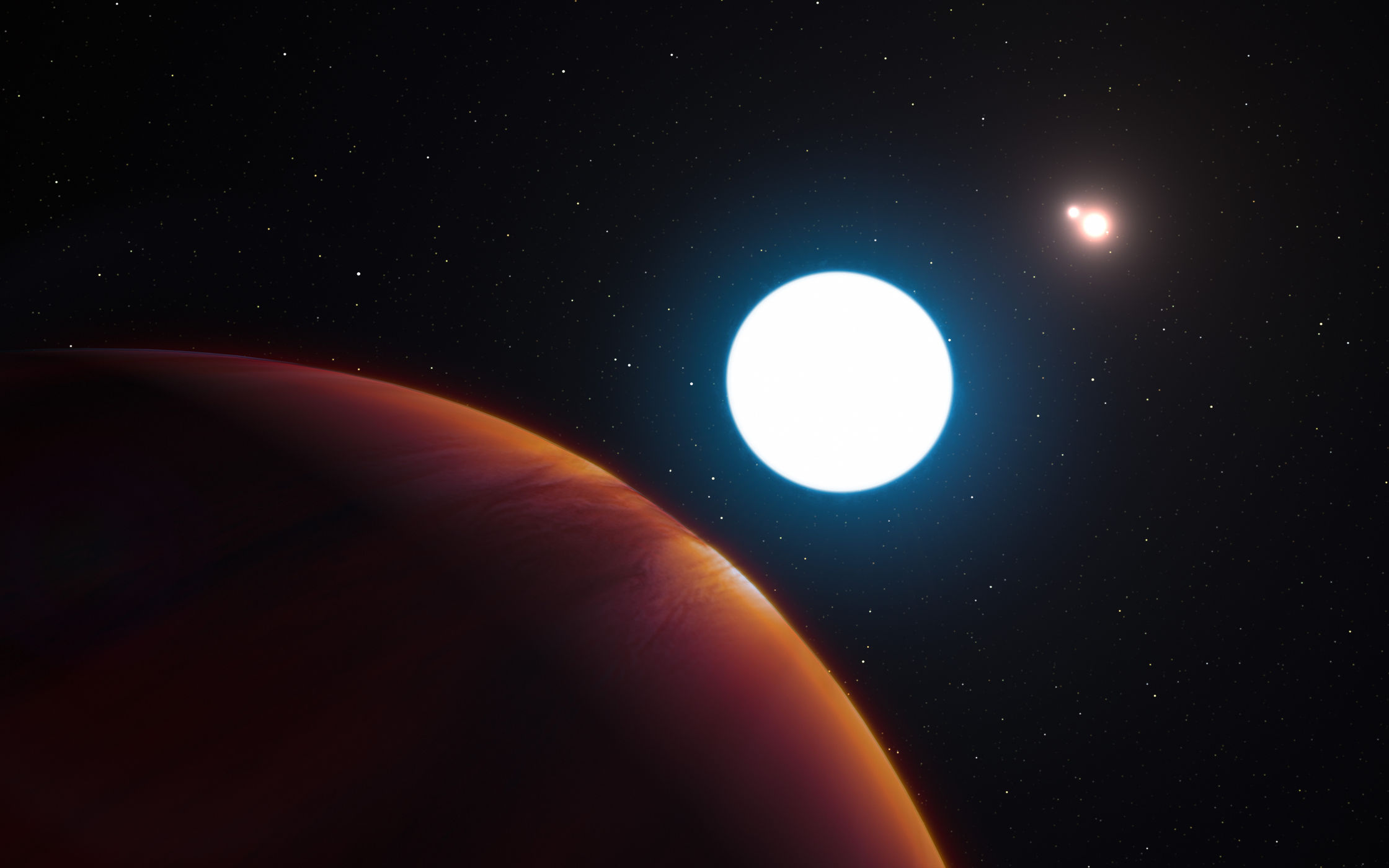In the constellation Centaurus, some 340 light-years from Earth, a newly discovered Jovian exoplanet has just been spotted in what Space.com is calling “a highly exotic celestial arrangement.” The planet HD 131399Ab orbits three stars in a dizzying cosmic dance, and for about half of its 550-year trip around the star system, all three would appear visible in the planet’s sky.
In the triple star system, HD 131399Ab is closest to star A, a bright and massive star that’s about 7.8 times brighter than our own sun. Stars B and C actually orbit each other as they also make their way around Star A. If that’s enough to tie your brain in knots, there’s a helpful artist’s rendering:
Even with three suns the planet’s surface isn’t as scorching hot as you might immediately guess. The distant from the planet to star A is over 80 times the distance between Earth and our own sun. According to Space.com‘s calculations, each of the three suns would appear about as bright as a full moon seen from Earth. But that shouldn’t diminish the beauty of a triple sunset.
“For much of the planet’s year, the [three] stars appear close together, giving it a familiar nightside and dayside with a unique triple sunset and sunrise each day,” Kevin Wagner, a first-year doctoral student at the University of Arizona explained. For about one-quarter of its orbit, or 140 Earth-years, the stars are far enough apart that the planet is actually in “near-constant daytime,” although that “daytime” is roughly twice as bright as high noon appears on Pluto.
As for the composition of HD 131399Ab: researchers used direct imaging instruments on the European Extremely Large Telescope in the Atacama desert of Chile to determine the planet is about 1,070 degrees Fahrenheit, about four times as massive as Jupiter and contains both water and methane in its atmosphere.
(44)
